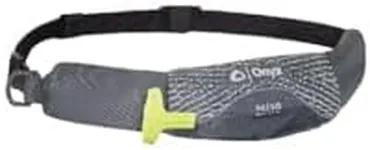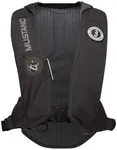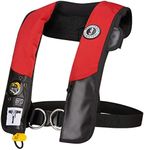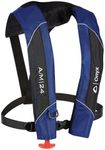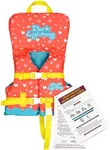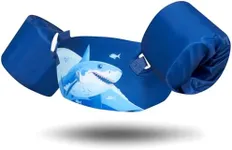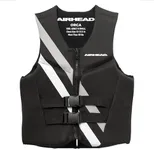Buying Guide for the Best Inflatable Life Vests
Choosing the right inflatable life vest is crucial for ensuring your safety while engaging in water activities. Inflatable life vests are designed to provide buoyancy and keep you afloat in the water. When selecting a life vest, it's important to consider various specifications to ensure it meets your needs and provides the necessary protection. Here are some key specifications to consider when choosing an inflatable life vest.BuoyancyBuoyancy refers to the life vest's ability to keep you afloat in the water. It is measured in Newtons (N) or pounds (lbs). Higher buoyancy means more flotation support. For calm waters and near-shore activities, a buoyancy of 70-100N (15-22 lbs) is usually sufficient. For offshore or rough waters, look for vests with 150N (33 lbs) or more. Choose a buoyancy level based on the type of water activity and conditions you will be in.
Inflation MechanismInflatable life vests can be manually or automatically inflated. Manual vests require you to pull a cord to inflate, which is suitable for experienced swimmers or those who want more control. Automatic vests inflate upon contact with water, providing immediate buoyancy, which is ideal for non-swimmers or unconscious individuals. Consider your swimming ability and the likelihood of falling into the water when choosing the inflation mechanism.
Comfort and FitComfort and fit are essential for ensuring you wear the life vest properly and for extended periods. Look for adjustable straps and a design that fits snugly without restricting movement. Try on different sizes and styles to find one that feels comfortable and secure. A well-fitting vest will not ride up or shift when you are in the water.
Material and DurabilityThe material of the life vest affects its durability and comfort. Most inflatable vests are made from nylon or polyester, which are lightweight and resistant to wear and tear. Check for reinforced stitching and high-quality materials that can withstand exposure to water, sun, and rough handling. Durable materials ensure the vest will last longer and provide reliable performance.
VisibilityVisibility is important for being easily seen in the water, especially in emergency situations. Look for vests with bright colors, reflective strips, or built-in lights. High-visibility vests increase the chances of being spotted by rescuers or other boaters. Choose a vest with features that enhance visibility based on the conditions you will be in.
Additional FeaturesSome inflatable life vests come with additional features such as pockets, D-rings, or harnesses. Pockets can be useful for storing small items like whistles or signal mirrors. D-rings allow you to attach safety lines or other equipment. Harnesses provide extra security for activities like sailing or windsurfing. Consider what additional features might be beneficial for your specific water activities.
